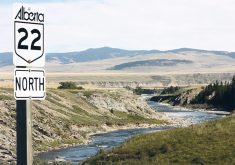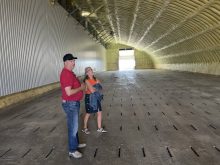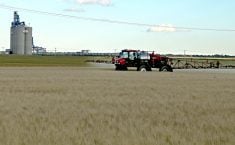Farmers may have to decide whether they want to keep their crossings as new regulations come into force next year
Farmers with private rail crossings will have to decide whether to keep them when new regulations come into effect late next year.
The regulations require railway companies and public transport authorities to meet new safety standards by Nov. 27, 2021. Landowners with private crossings must also meet the regulations, and may be required pay for some of the upgrade costs.
However, some leaders of farm organizations say that even though safety is important, it’s concerning that farmers may have to pay for upgrades of crossings that are crucial access points.
Read Also

New coal mine proposal met with old concerns
A smaller version of the previously rejected Grassy Mountain coal mine project in Crowsnest Pass is back on the table, and the Livingstone Landowners Group continues to voice concerns about the environmental risks.
“Crucial access spots should be identified, and I don’t think it’s fair for producers to pay for those costs,” said Todd Lewis, president of the Agricultural Producers Association of Saskatchewan.
“Other crossings, where perhaps it’s something that may just be a convenience, producers can make the decision about putting more money into that.”
The regulations were established in 2014 after the Railway Safety Act was reviewed.
During the review, Canadian Pacific Railway told the transportation ministry that fewer crossings increase public safety.
CP pointed to statistics from the Transportation Safety Board that show between 2009 and 2015, there were an average of 178 incidents, resulting in 24 fatalities and 25 serious injuries per year.
According to the federal government, there are about 9,000 private crossings.
The new rules mean the railways would be responsible for several aspects of the change:
- Installing and maintaining crossings, the number of tracks and notification signs.
- The design, maintenance and inspections of the crossing warning system.
- Installing and maintaining the crossing surface between the ends of ties.
- Maintaining sight-lines within the railway right-of-way and on land adjoining the railway right-of-way.
Landowners with private crossings would be responsible for the following:
- Maintaining a road approach outside of the railway right-of-way.
- Installing and maintaining traffic control devices, like a stop sign, on land, if it isn’t on the same post as the railway crossing sign.
- Ensuring sight-lines are provided on land that’s up to the railway right-of-way, and are clear of any obstructions.
For crossings on public roads, road authorities would be responsible for the following:
- The design, construction and maintenance of the road approaches.
- Maintaining traffic control devices, except for the maintenance of a stop sign that is installed on the same post as the railway crossing sign.
- The design of the crossing surface.
- Maintaining sight-lines on lands where the road is situated, and on land in the vicinity of the grade crossing.
Many producer groups are hoping to extend the 2021 deadline, saying they need more time for consultation.
“Landowners with private crossings and railways need to sit down and decide what has to happen,” said David Bishop, chair of the Alberta Barley Commission.
“We will need better communications from the railways, and a better explanation of what Transport Canada wants. Safety is always in the forefront,” he said.
CP had sent a letter to producers in March, warning them that their crossings could be removed if they didn’t sign a legal agreement by April. The move had upset some farmers. CP has since walked back from that requirement, suggesting private crossings don’t face immediate removal.
“Communication with CP was not where it should have been,” said Bishop. “Sending out letters in the middle of a pandemic — the timing is not very good.”
Bill Campbell, president of Keystone Agricultural Producers, said extending the deadline would help producers better understand their responsibilities.
“Right now, there is a lot of producers that would not be able to absorb the additional responsibilities,” he said. “The biggest thing is having an open dialogue. There has been large inadequacies in regards to communications, and we hope there will be better steps going forward.”
Sean Finn, executive vice-president of Canadian National Railway, said the company has been initiating conversations with landowners about private crossings.
“CN insisted we have dialogue with the provincial farming associations, and how we can best go about having these conversations,” he said.
He said the upgrades are about ensuring railway safety, adding railway collisions mostly occur at crossings.
“We need to ensure we make crossings safer, and we need the information and funding to do this,” he said. “Road authorities or landowners also have a responsibility to fix it or close it — there should be no unsafe crossing on the network.”
The federal government is providing funding to help with upgrading or removing crossings.
However, Lewis said more funding may need to become available.
“This would be a good candidate,” he said. “Rail is an economic driver in the country and railway infrastructure is very important.”


















